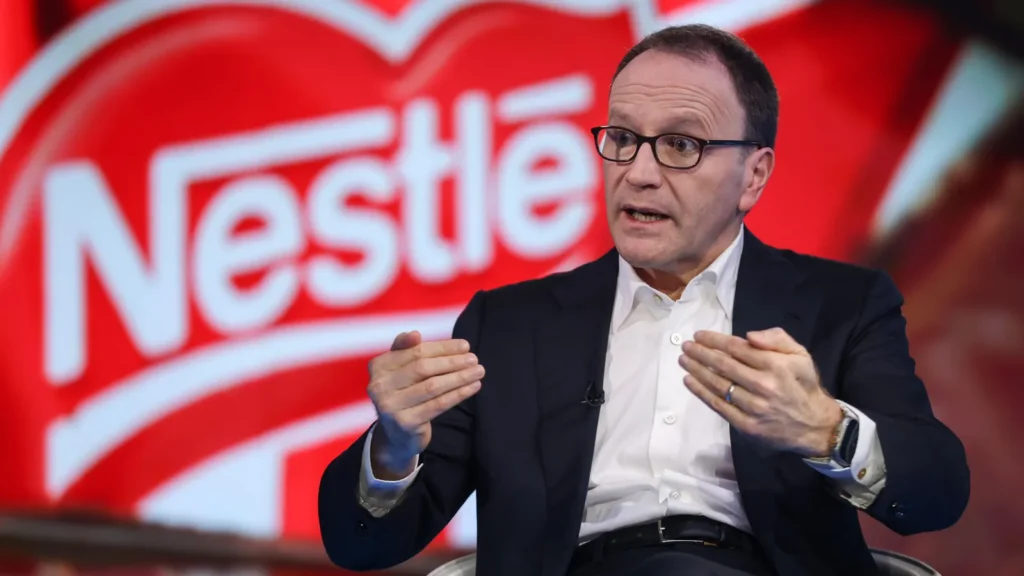Weight Loss Drugs Won’t Eat Into Food Industry Profits, Nestlé CEO Says
In a recent interview, Nestlé CEO Mark Schneider expressed confidence that the surge in popularity of GLP-1 weight loss drugs like Ozempic, Mounjaro, and Wegovy would not negatively impact the food industry’s profits. Instead, Schneider highlighted an emerging opportunity to cater to the evolving nutritional needs of consumers on these medications. This article examines Schneider’s insights, Nestlé’s strategic response, and the broader implications for the food industry.
Shifting Nutritional Needs
When GLP-1 drugs first gained traction, there was widespread concern within the food industry that their effectiveness in appetite suppression would lead to a significant reduction in food consumption, ultimately affecting industry profits. However, Schneider told CNBC’s Silvia Amaro that these initial fears have evolved into a sense of opportunity. He emphasized that the nutritional needs of consumers on GLP-1 drugs are not disappearing but are shifting.
“Consumers still have nutritional needs, but they may be different from someone who is not on a weight loss regimen,” Schneider explained. He pointed out that individuals on these drugs must ensure they get enough nutrients and vitamins from their diet, as well as sufficient protein to maintain muscle mass.
Nestlé’s Strategic Response
Recognizing this shift, Nestlé is adapting its product offerings to meet the specific needs of GLP-1 drug users. Schneider revealed that Nestlé plans to introduce a new line of healthier “companion products,” designed to support the dietary requirements of consumers on weight loss drugs. One of the key initiatives is the launch of a new frozen food line called Vital Pursuit, aimed at GLP-1 users, which is scheduled to hit the market later this year.
Schneider also hinted at the development of additional “companion offerings” tailored to those taking obesity medications, although he did not provide specific details or timelines for these products. The goal is to create products that appeal not only to GLP-1 users but also to anyone on a weight loss journey.
Broader Industry Perspective
Schneider’s optimistic outlook extends beyond Nestlé’s initiatives. He believes that the new product lines targeting GLP-1 drug users will complement the existing food and drink industry offerings, rather than replacing them. He emphasized the diverse consumer base, noting, “Remember, there’s going to be a lot of consumers out there that are not on a GLP-1 diet.” He added that traditional snacks and chocolates would continue to hold significant interest for many consumers.
Importance of Balanced Nutrition
A crucial aspect of Schneider’s message is the importance of balanced nutrition for those on weight loss medications. He stressed that the fundamentals of weight loss remain the same: ensuring the loss of fat rather than lean muscle mass and preventing vitamin deficiencies. This approach underlines the need for comprehensive nutritional solutions that support overall health and well-being.
Background on GLP-1 Drugs
GLP-1 agonists, such as semaglutide (found in Ozempic and Wegovy) and tirzepatide (found in Mounjaro), have revolutionized the weight loss industry with their ease of use and high efficacy. These drugs mimic a gut hormone that regulates appetite and blood sugar levels, providing weight loss results previously achievable only through surgery. In addition to treating obesity, diabetes, and cardiovascular issues, research suggests that GLP-1 drugs may also help with conditions like sleep apnea, addiction, anxiety, Parkinson’s, and kidney disease.
The market for these drugs is currently dominated by pharmaceutical giants Novo Nordisk and Eli Lilly. Despite facing chronic shortages, these companies are expected to maintain their market leadership due to the drugs’ proven benefits and increasing demand.
Initial Industry Concerns and Emerging Trends
Initially, the food industry feared that the rising popularity of GLP-1 drugs would lead to decreased food consumption and, consequently, lower sales. However, as the understanding of these drugs’ effects has deepened, a new trend has emerged: consumers are not eliminating food from their diets but are instead seeking healthier and more nutritionally balanced options. This shift presents a lucrative opportunity for food companies to innovate and cater to the specific needs of this growing consumer segment.
Conclusion
Nestlé’s proactive approach to addressing the changing nutritional needs of consumers on weight loss drugs illustrates the potential for the food industry to adapt and thrive amidst evolving market dynamics. By focusing on balanced nutrition and developing tailored product offerings, companies like Nestlé can capitalize on new opportunities while continuing to serve their broader customer base. As the popularity of GLP-1 drugs continues to grow, the food industry’s ability to innovate and meet diverse dietary needs will be crucial in maintaining and even enhancing profitability.
Read: Nestle Launches Food Brand for Ozempic Users




